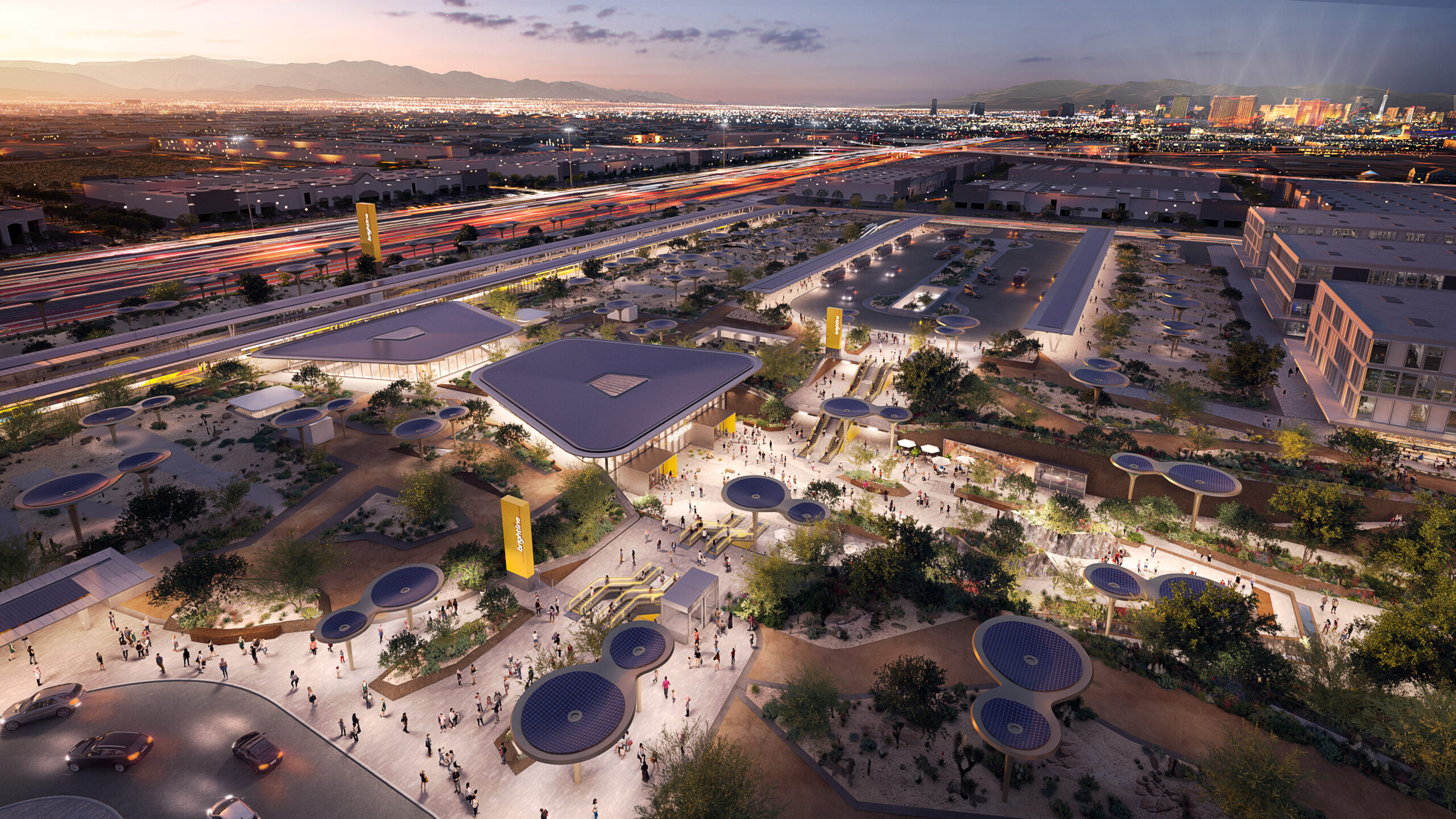OPINION: Will anyone actually ride the bullet train from nowhere?

Are Angelenos going to be lining up to commute an hour to Rancho Cucamonga so they can pay $400 to ride a bullet train to Las Vegas?
The corporation moving forward with plans to build the much-discussed high-speed rail project between Southern California and Las Vegas seems to believe so, according to a recent interview in the Los Angeles Times.
Brightline Founder Wes Edens told the paper his company would “eventually charge more than $400 for a round trip” from Southern California to Las Vegas, which seems … well, excessive.
For starters, this isn’t actually a train connecting Vegas and Los Angeles — it’s a train that connects Vegas to somewhere vaguely near Los Angeles. Rancho Cucamonga isn’t in the “middle of nowhere,” but it’s nonetheless roughly an hour away from the middle of SoCal’s most populous city, requiring many would-be visitors to navigate local transit options before they even arrive at the starting point for their trip to Vegas.
To get to Brightline’s proposed station, L.A. travelers will first have to endure a journey that takes roughly 50 minutes by car, an hour and 15 minutes by light rail or nearly two and a half hours by bus. (Don’t go by bus.) Only then will they be able to board Brightline’s new train that will whisk them to Vegas at speeds reaching nearly 200 miles per hour.
Certainly, covering 218 miles in an estimated two hours and 10 minutes is objectively quick — but it’s still about an hour slower than those old-fashioned jet engines currently flying passengers between Los Angeles International Airport (LAX) and Harry Reid International Airport.
When one considers the added time of commuting to Cucamonga via light rail or car, and navigating security and ticket lines, it’s quite possible the actual length of the journey will be roughly equal to going through a TSA line and hopping on a Southwest Airlines flight — an option that would cost a mere fraction of Edens’ proposed $400 fare.
Even if the total experience on Brightline happens to be marginally quicker than navigating the chaos of LAX, it’s worth considering the fact that speed isn’t the only consideration for many travelers visiting from Southern California.
Indeed, it might not be a consideration at all, judging by how many Californians opt out of affordable air travel and instead brave gnarly Interstate 15 gridlock on a regular basis. Brightline estimates about 85 percent of visitors from SoCal drive rather than fly — a stunning number that should beg the question, “Why?”
After all, air travel is an existing cheap and accessible option that’s already faster than driving — so why do relatively few people currently do it? The fact that an overwhelming majority of visitors from SoCal appear disinterested in saving time by flying doesn’t bode well for an alternative that will take roughly the same amount of time but cost considerably more.
Perhaps the biggest reason so many visitors decide to drive rather than fly is simply the “car culture” we have in America. As it turns out, in this part of the world we have proven to be stubbornly in love with our automobiles, which is one of many factors that regularly frustrates mass-transit advocates.
The general hesitancy among Americans to embrace virtually any transit alternative that isn’t their own personal automobile is also one of the reasons high-speed rail projects elsewhere have had difficulty turning a profit. Even Brightline’s spectacular rail project in Florida — often hailed as a model for future projects elsewhere — continues to operate in the red as it slashes ridership forecasts for the year ahead.
In this nation, where railways were long ago replaced by motorways, freeways and interstates, asking Americans to embrace an improved version of 19th century transportation methods was always going to be a big ask. And in this corner of America it might be especially difficult considering the immunity to heavy traffic many of us have developed through years of SoCal-style traffic jams and gridlock.
No wonder so many Vegas-bound visitors from California don’t seem the least bit fazed about multihour highway delays in the middle of the Mojave — they face something similar every time they hop on Interstate 405 to get to work.
None of this is to say that Brightline can’t possibly make things work financially. With billions of dollars in government money at its disposal and a very real dissatisfaction with road conditions on busy holiday weekends, there’s likely some path to profitability for the company.
However, it seems doubtful that expecting car-obsessed Californians in Rancho Cucamonga to pay $400 for a round-trip ticket to Las Vegas is going to be the way to blaze that path.
Michael Schaus is a communications and branding expert based in Las Vegas, Nevada, and founder of Schaus Creative LLC — an agency dedicated to helping organizations, businesses and activists tell their story and motivate change. He has more than a decade of experience in public affairs commentary, having worked as a news director, columnist, political humorist, and most recently as the director of communications for a public policy think tank. Follow him at SchausCreative.com or on Twitter at @schausmichael.
